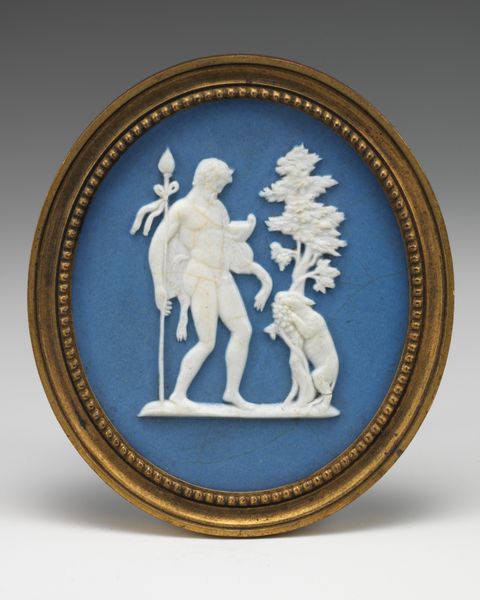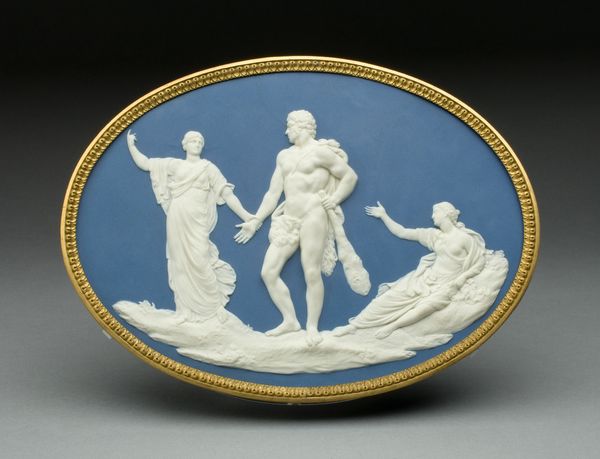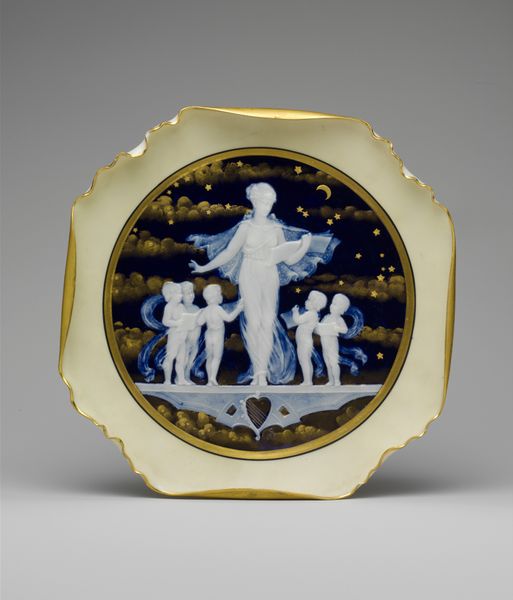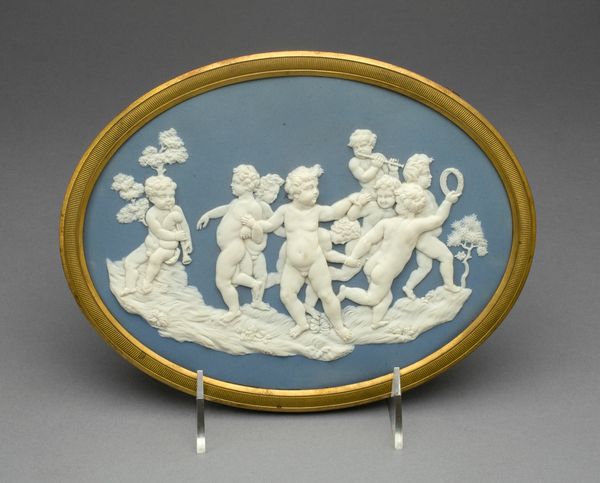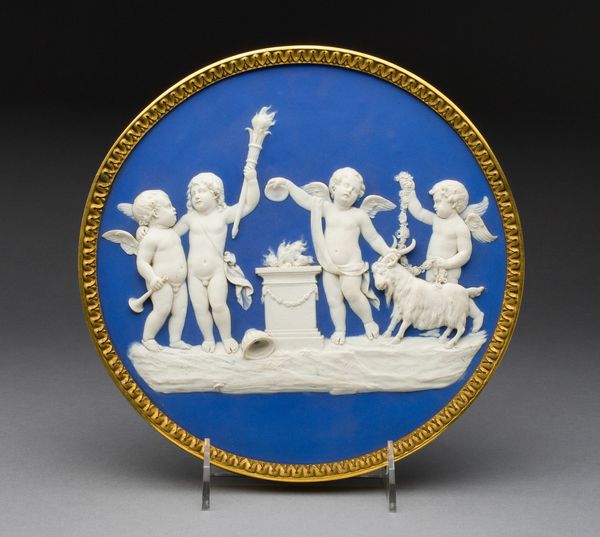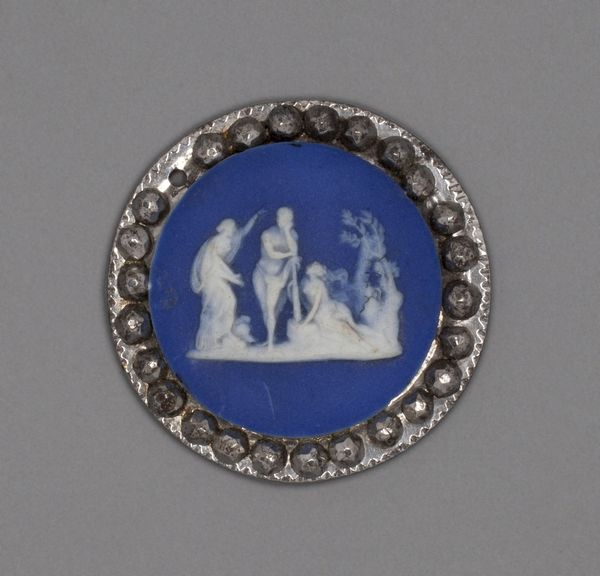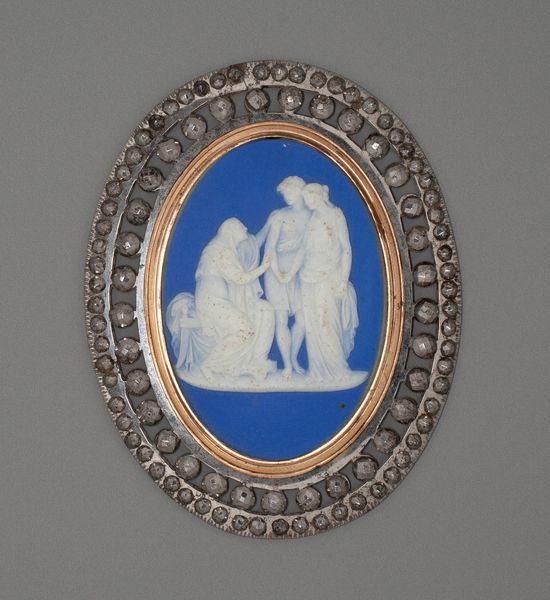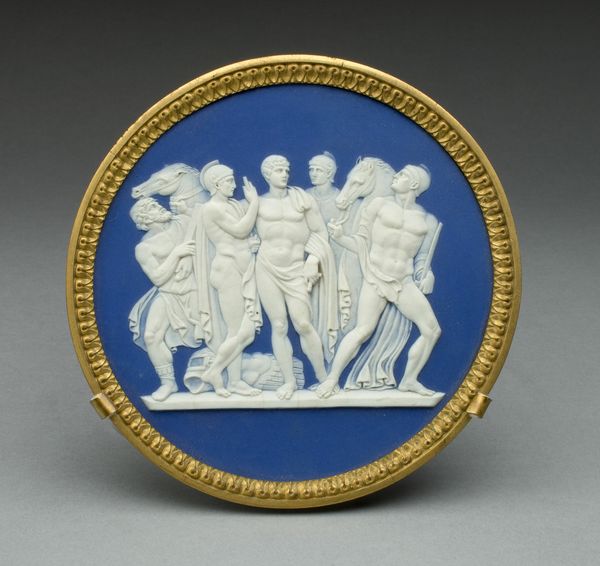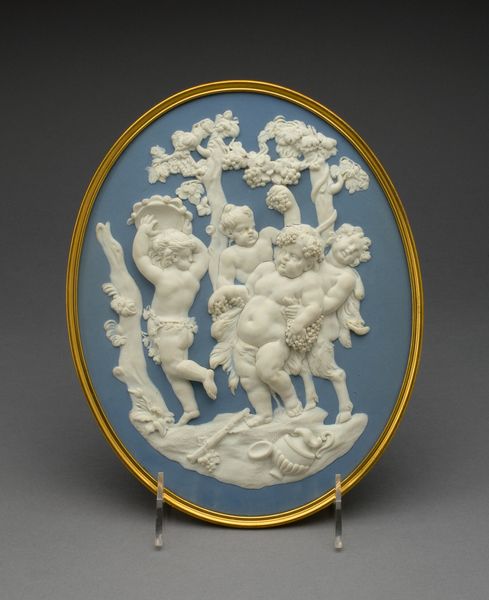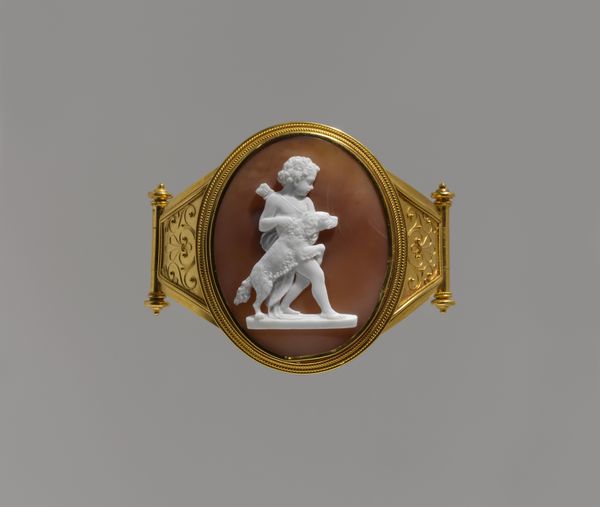
Diomedes prevented by Apollo from pursuing Aeneas (?) 1782 - 1792
0:00
0:00
relief, ceramic, sculpture
#
neoclacissism
#
greek-and-roman-art
#
relief
#
ceramic
#
figuration
#
geometric
#
sculpture
#
history-painting
#
decorative-art
Dimensions: Diameter: 2 9/16 in. (6.5 cm); Framed: 3 3/8 in. (8.6 cm)
Copyright: Public Domain
Editor: This is "Diomedes prevented by Apollo from pursuing Aeneas (?)," a ceramic relief made by Josiah Wedgwood between 1782 and 1792. The scene, rendered in white against a striking blue background, feels very dramatic, yet distant because of its scale and medium. What is your read of the cultural context of this work? Curator: The cool Neoclassical style isn't just about aesthetics; it's a deliberate return to what was perceived as the rational, ordered world of antiquity, in opposition to the aristocracy of the Rococo. Consider how the rise of Neoclassicism intertwined with the social upheavals of the late 18th century – the American and French Revolutions. Do you think the subject matter – a scene of conflict – adds to a particular interpretation of it in its time? Editor: Definitely! It speaks to the ongoing tensions of the period, a yearning for order amid chaos. The relief format makes me think of ancient Roman cameos. Curator: Precisely. Wedgwood consciously connected himself to a lineage of artistic production associated with power and prestige. But how does that influence the politics of accessibility? The blue ceramic, ‘jasperware,’ allowed for mass production of items previously only affordable by the wealthy. Editor: So it's democratizing art, in a way, making these classical motifs accessible to a broader audience, but possibly through a colonizing lens, given Wedgwood's abolitionist stance yet investment in colonial markets. Curator: Absolutely! It’s important to remember how art from the period reflected and even perpetuated the power dynamics of the time, despite seeming apolitical on the surface. Do you think viewing this through an intersectional lens changes your initial interpretation? Editor: It completely reframes it. I now see how Neoclassicism was never a neutral aesthetic. Curator: And that its aesthetic choices were actively involved in shaping contemporary notions of class, access, and even empire. Editor: I'm struck by the realization of the need to continually challenge assumptions of classicism and question who benefits from these aesthetic choices.
Comments
No comments
Be the first to comment and join the conversation on the ultimate creative platform.
